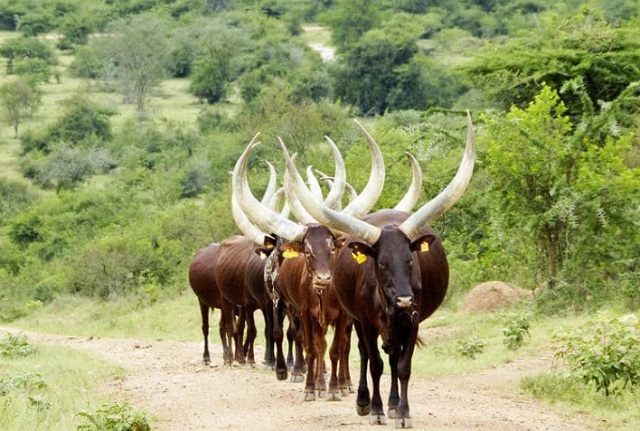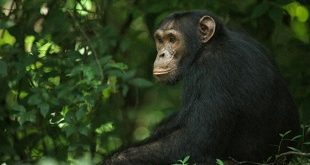
New scientific study shows Lake Mburo National Park is paradise for both
| THE INDEPENDENT | In most of the wildlife conservation community in Uganda, the establishment of livestock ranchlands adjacent to protected areas in savanna ecosystems is believed to threaten wild animals. Intensive competition for vegetative resources, water and poaching are considered to be immediate factors that reduce the capacity of protected areas to sustain wild mammals.
But a newly published report of a study by researchers from Makerere University Kampala appears to negate the common belief of competition and exclusion.
The study published in the international journal `Nature Conservation’ was done by a PhD candidate Antonia Nyamukuru of the College of Agricultural and Environmental Sciences, Makerere University. The study funded by the Norwegian Programme for Capacity Building in Higher Education and Research for Development (NORHED) was conducted in the eastern part of Lake Mburo National Park (LMNP)and the adjacent ranchlands, in Kiruhura District, South Western Uganda.
Instead of showing competition and exclusion, the new study points to the compatibility of ranchlands adjacent to protected areas in savanna ecosystems in conserving wild mammals and biodiversity.
Lake Mburo National Park (LMNP), which is 260 km2 large and just 250km from Kampala city along the Masaka-Mbarara Highway, is the smallest grassland protected area in Uganda. It is located within a dry land savanna, surrounded by livestock ranchlands in Kiruhura District and bordered by Lyantonde, Mbarara, Isingiro, Ibanda and Rakai districts.
Since its gazette, grazing land for livestock was reduced as livestock was restricted from entering the gazette. It was argued that livestock grazing was incompatible with wildlife conservation even if the decision to exclude livestock grazing from the park was not guided by any critical study to assess whether exclusion was the best option for conserving biodiversity.
The study found evidence of park animals grazing in ranchlands and livestock grazing in the conservation area. It found that animals like Zebra, Buffalo, Impala, Eland, baboons and Topi routinely graze in ranchlands, while cattle and horses graze in the park.
According to the study, some mammals such as Zebra, Impala, Eland, waterbuck, and others appear to prefer grazing in ranchland than in the designated conservation. During the study period, there were 538 incidents recorded of Zebra grazing in ranchland in the study area which equally straddled ranchland and designated conservation area. In comparison, only 266 incidents of Zebra grazing in the study conservation area were recorded. In case of impala, 66 incidents of grazing were recorded in the park compared to 466 in ranchlands.
In comparison, 163 cases of Buffalo grazing in the park were recorded in comparison to just six in ranchland. This shows than unlike the other mammals, buffalo prefer to graze in the park than in ranchlands. Lake Mburo National Park also boasts giraffes and leopards but these were not spotted in the study.
In case of cattle, 619 grazing incidents were recorded in the ranchlands compared to 122 in the parks. This shows that although cattle enter the part to graze, they are predominantly in the ranches.
The study was titled `Wild mammal dung abundance in Lake Mburo National Park is lower than in adjacent ranchlands’. It used dung counts as a proxy for biodiversity, distribution and relative abundance of mammals.
Studies have shown that dung counts are accurate estimates of mammal population biomass and density. It is assumed that if dung count rates are higher in the ranchlands than the national park, this may suggest that the population density of specific grazing animals could be higher in the ranchlands that produce it.
The researchers ensured that the chances of finding dung piles were equally likely on both sides of the boundary. The dung pile was identified and attached to mammal species with the help of an experienced game ranger.
For the research, dung counts were made in four sites of about 1km2 each in the park and in the ranchlands that were specially selected away from their common boundary and paired. The 300m away from the boundary was applied to avoid what scientists call the `edge effect’, which is an ecological concept that describes how there is a greater diversity of life in the region where the edges of two adjacent ecosystems overlap, such as land/water or forest/grassland. Also, it was noted, wild animals maintain a shorter distance away from grazing (livestock) than from other human activities like agriculture and settlement.
“This is evidence that wild mammals either periodically migrate from the Park to neighboring land uses or live there as residents,” says the researcher.
“The presence of bushbuck, hyena, mongoose, hare, and bush duiker on ranchlands and not in the park further demonstrates the lack of imminent threats to these animals on the ranchlands but rather a possibility of coexistence. By choosing to range on ranchlands rather than the protected area, these species affirm the existence of more suitable ecological conditions and the differences in habitat selection by different species,” she adds.
The researchers say although conservation purists believe exclusion of land uses that are perceived to be incompatible with protected areas is the best way to counter biodiversity loss, the exclusion has not completely halted the loss of biodiversity in protected areas. Instead, the researchers say, in some cases exclusion has exacerbated human-wildlife conflict since communities still want to access essential resources within the protected areas.
“The demand for land and its resources in areas adjacent to protected areas managed for biodiversity conservation is increasingly putting pressure on biodiversity conservation areas, prompting the need for land use options that can simultaneously conserve biodiversity and serve other production uses,” the study points out.
Such coexistence of wild mammals and ranchlands is common in Southern Africa but has rarely been suggested as a viable conservation option in East Africa.
****
 The Independent Uganda: You get the Truth we Pay the Price
The Independent Uganda: You get the Truth we Pay the Price



Great results. The ranchers could make the coexistence of wild animals and livestock on their land as an opportunity for tourism rather than a cost